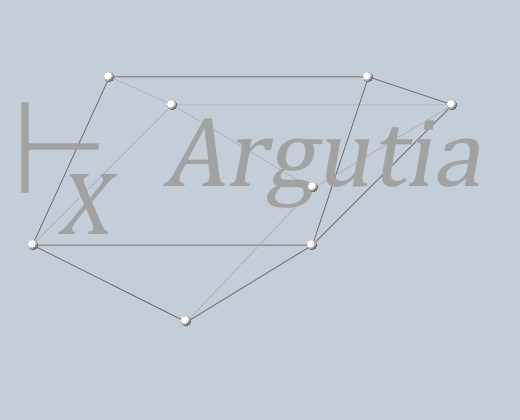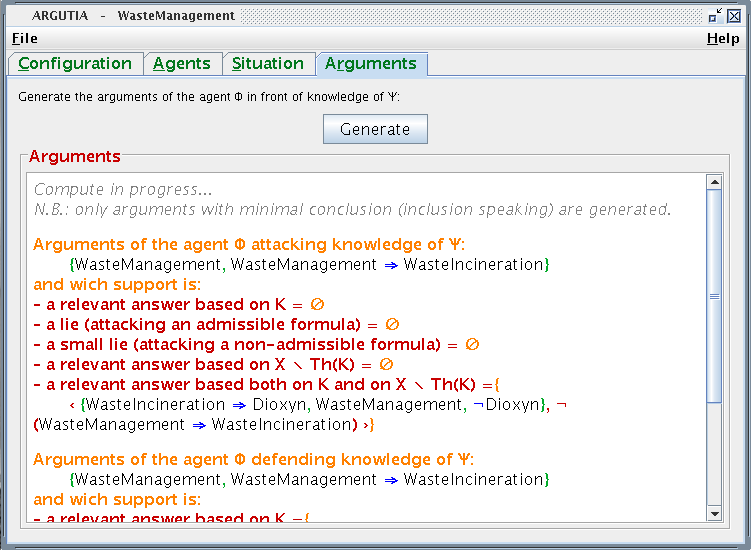

Let see with a simplified (but real) example how Argutia works.
Consider the agents Φ and Ψ representing respectively two politicians, competing for
a city election, and arguing about wether the managing of waste requires the construction of a burning
manufactory or wether alternate solutions exist:
Φ = [{WasteManagement, WasteManagement → (WasteIncineration ∨ WasteReprocessing),
WasteIncineration → Dioxyn}, {⊥, Dioxyn}] and Ψ = [{WasteManagement,
WasteManagement → WasteIncineration}, {⊥, Dioxyn, WasteIncineration → Dioxyn}]. In other
words, both agents agree on the fact that they have to consider the question of waste management
(WasteManagement belongs to K of both agents), and that they do not accept the production of
dioxyn (Dioxyn belongs to X of both agents), but Φ considers that this question
can be adressed by the construction of an incinerator as well as by reprocessing
(WasteManagement → (WasteIncineration ∨ WasteReprocessing), while for Ψ, there is
no other way than constructing an incinerator (WasteManagement → WasteIncineration).
Meanwhile, Φ considers that waste management generates dioxin
(WasteManagement → Dioxyn), while Ψ is not ready to accept that waste incineration
(through modern means) could produce a significant amount of dioxyn (WasteIncineration → Dioxyn is
in X). Note that both agents reason in a consistent way (⊥ belongs implicitely to X of both
agents). So, then launch Argutia: it will open a window with four tabs:
Configuration, Agents (the selected tab by default), Situation, and
Arguments.

The Configuration tab allows to define basic parameters such as logical symbols, or still the
underlying langage (english or french).

The encoding of the two agents can be done either by filling up the differents fields with the
corresponding formulas or by loading a previous encoding via the File menu. For instance, the above
example is represented by:

Switching to the Situation tab opens the following empty window, which permits to compute the
different attitudes either of the two agents may adopt in front of the knowledge of the other one.

So, let us compute the attitudes of agent Φ in front of K of agent Ψ:

Especially, Φ is Against the formula
WasteManagement → WasteIncineration taken in K of Ψ. Once the attitudes of
Φ computed, switching to the Argument tab permits to compute the
different arguments that Φ can generate by facing the knowledge of Ψ. Hence, clicking
on the Generate button, yields the following output:

As expected, Φ can attack the knowledge of Ψ with the argument <{WasteIncineration → Dioxyn, WasteManagement, ¬ Dioxyn}, ¬(WasteManagement → WasteIncineration)> constructed from his answer to the formula WasteManagement → WasteIncineration.